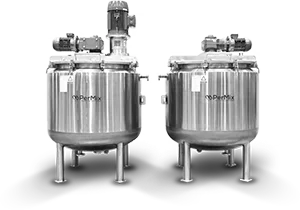Industrial Mixers
PerMix News & Updates


Fluidized Zone Mixers (FZMs) are specialized mixing machines designed to efficiently and effectively mix multi-density powders. They are used in many industries to improve the consistency and quality of final products. FZMs are ideal for combining different types of powders into a homogenous mixture. By optimizing the mixing process, they can help to reduce the time and cost associated with producing a product with consistent quality.
The FZM design provides a unique advantage over traditional mixing methods. Unlike other mixers, FZMs use a fluidized zone to mix powders of different densities. This zone is created by introducing a gas stream into the mixing chamber. The gas stream fluidizes the powders, allowing them to move freely and rapidly within the chamber. This allows the FZM to quickly and evenly blend the powders together, resulting in a homogenous mixture.
The FZM design also allows for greater control over the mixing process. The gas stream can be adjusted to create the optimal environment for mixing. The speed of the gas and the pressure can be adjusted to create the desired mixing effect. This allows for greater control over the consistency of the final product.
In addition to the improved mixing performance, FZMs also have other benefits. They are able to mix powders of a wide range of densities, from light to heavy, in a single process. This makes them ideal for multi-density powders. They are also able to handle large volumes of material, making them ideal for high-volume production.
Overall, FZMs are an effective and efficient solution for mixing multi-density powders. They provide a unique and effective way to mix powders of varying densities in a single process. By optimizing the mixing process, they can help to reduce the time and cost associated with producing a product with consistent quality. With their ability to handle large volumes of material, FZMs are an ideal solution for high-volume production.
Come see the PerMix difference